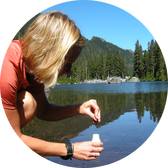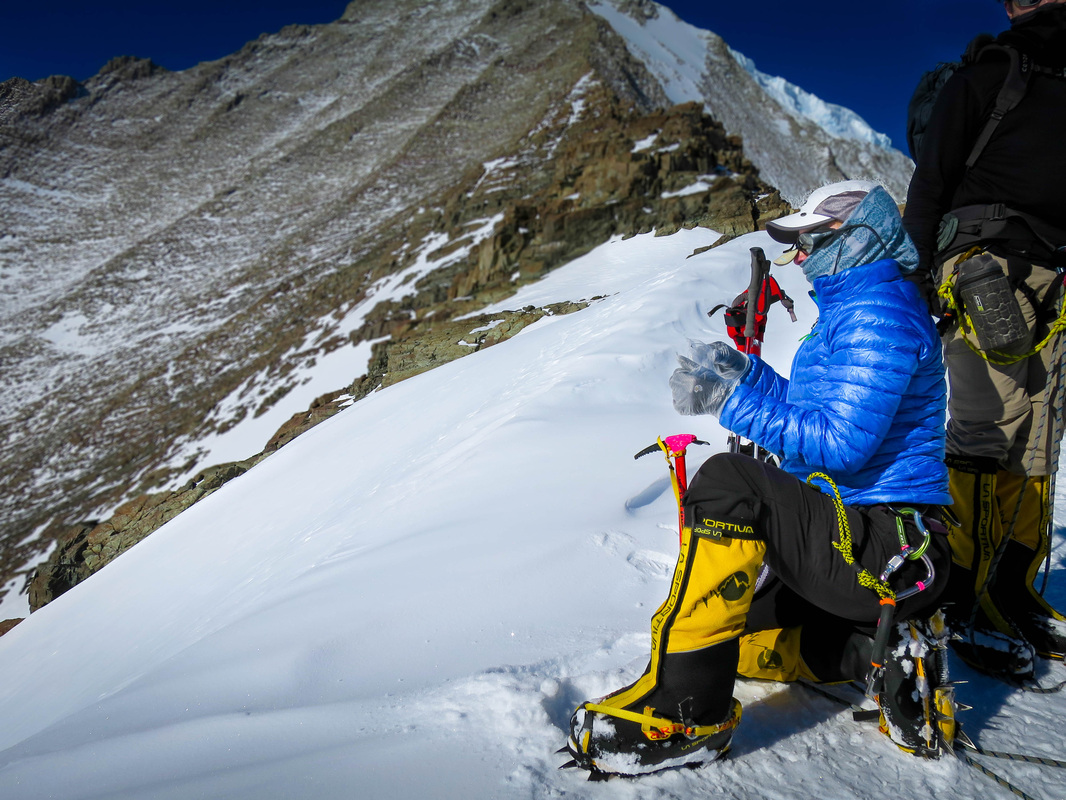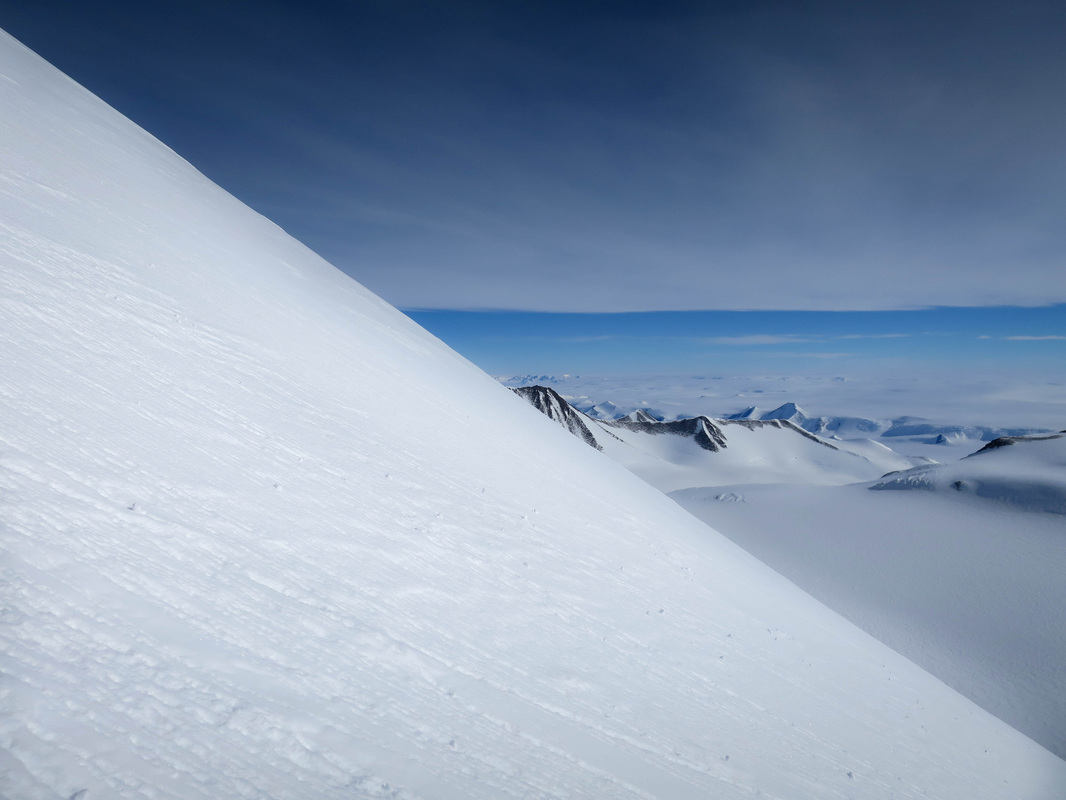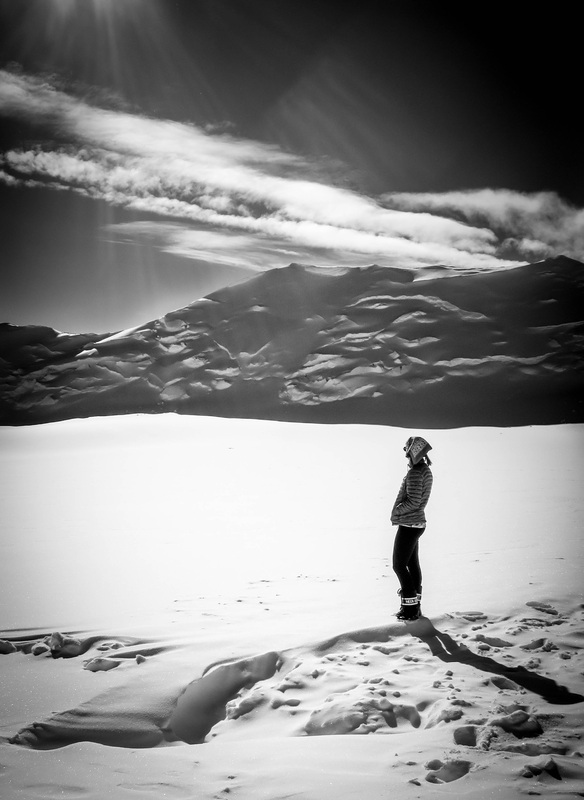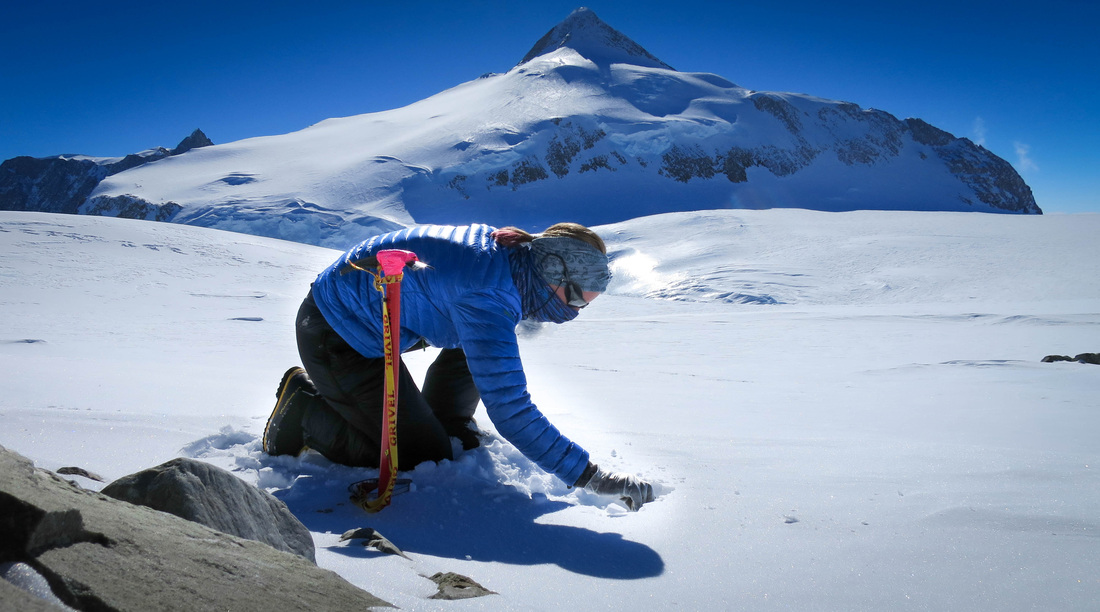“Antarctica?! Who goes there?” That’s what flew out of my father’s mouth when I told him where I was headed. Having spent all of their lives in Illinois, it was difficult for my family to wrap their brains around what would draw me to such a remote and harsh continent. There were two reasons, really. My primary motivation was to safely climb Mt. Vinson, but secondarily I wanted to share the experience with others who, like my father, who couldn’t envision what the coldest continent was like. This is where ASC comes in. Some would argue that mountaineering is a selfish activity, and I agree that it can be very self-serving. But it doesn’t have to be. Three years ago when I started working with ASC, I realized that by doing what I love, I can help other people. Other people whose primary focus is helping the planet. How cool is that?
Lisa White started alpine climbing five years ago when a friend asked her to climb Mt. Rainier in her home state of Washington. The ability to experience part of the mountain where few people reach and the sense of accomplishment drew Lisa to mountaineering. Soon she and her husband were looking for the next challenge, and the next. By 2012 they had climbed the highest peaks in North America, South America and Europe and most of Washington’s volcanos. They had also volunteered on numerous ASC projects, lending their passion for being outdoors for conservation. Their latest objective: 16,067 foot Mt. Vinson in Antarctica where Lisa and Darrin collected samples for ASC’s Snow & Ice project.
From Lisa:
After a bumpy ride aboard a cargo plane, we landed at Union Glacier at 2am and took our first tentative steps onto the blue ice runway. The frigid air mixed with jet fuel fumes and stung the inside of my nose but my primary focus was on staying upright as I groggily walked across the icy runway.
As my husband and I gradually made our way up the Vinson Massif toward Mt. Vinson, my body got used to the frosty, dry air and load of a heavy pack. When I’m climbing I normally am hyper focused on my body – how am I feeling, what hurts, what do I need – but this time I was distracted. My mind was instead occupied by the pristine vastness of this continent. How is it possible that so few people have witnessed it? How can it be preserved so that others have the opportunity to responsibly do so? Part of my mission was to help answer the last question.
Until I spent time in the mountains, I had not considered glaciers as much more than a collection of ice and snow. I hadn’t realized that they are living things that move and change and have a story to tell. Glaciers create a historic record of the environmental conditions that they have endured. Sometimes the story is a good one and glaciers grow and gain mass and provide valuable resources to the ecosystem. Other times the story is not as good, and glaciers are polluted and melt at an unexpectedly rapidly pace. Playing even a miniscule part in documenting the history of a glacier and the environmental clues locked in its frozen crystals excited me. And it was surprisingly easy.
At each camp on the Vinson Massif, I took time to scout an untouched patch of sparkly white snow. I would carefully dig down a few inches with my gloved hand and uncover the pristine crystals that would tell the story of this mountain.
Once I had collected the snow in a small plastic bottle, I labeled it and tucked it away for safe keeping. The snow would slowly melt as the heat of each day warmed the bottle inside of my tent. As I watched the slurry swirl around wildly inside the collection bottle, I thought about what it contained, and the story that it would tell. What would researchers learn about this mountain? What had it endured during it’s lifetime? What would it tell us about glacial habitats, and what would we, as stewards of this earth, do with this information? I didn’t have the skills to answer these questions by myself, but knowing that I played a small part in allowing them to be answered was thrilling, and just as rewarding as reaching the summit.
Headed up a tall peak or exploring Earth’s polar regions? Join our Snow & Ice project to understand glaciers and the effects of climate change on glacial systems! Keep up with ASC subscribing to ASC’s blog, liking us on Facebook and following us on Twitter (@AdventurScience), Instagram (@AdventureScience) and Google+.

